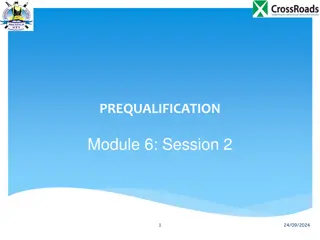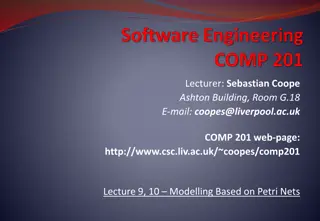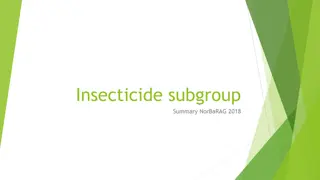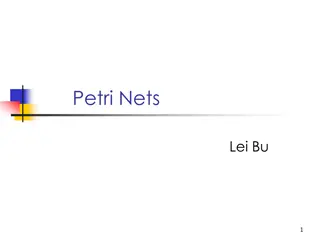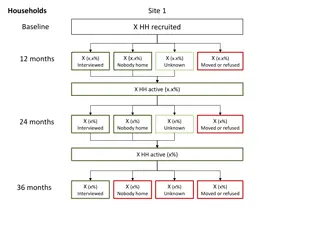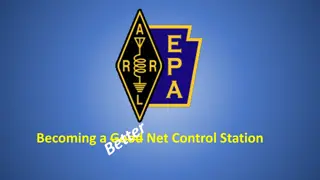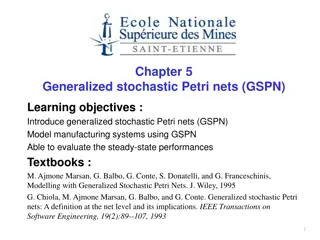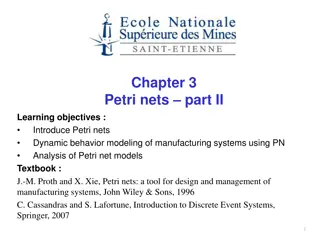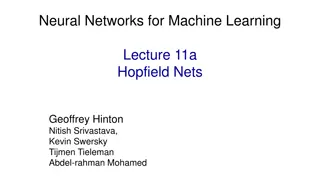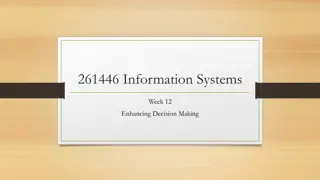Development of Insecticide-Treated Nets (ITNs) and Guidance Modules for Prequalification Decision Making
Insecticide-Treated Nets (ITNs) for vector control are undergoing prequalification with additional guidance modules for decision-making. These modules cover various aspects such as study protocol preparation, statistical analysis, manufacturing specifications, quality control, efficacy assessment, and more. The IGs under development aim to establish standards for ITN products and testing methodologies, with a focus on ensuring efficacy and compliance with WHO guidelines.
Download Presentation

Please find below an Image/Link to download the presentation.
The content on the website is provided AS IS for your information and personal use only. It may not be sold, licensed, or shared on other websites without obtaining consent from the author. Download presentation by click this link. If you encounter any issues during the download, it is possible that the publisher has removed the file from their server.
E N D
Presentation Transcript
Prequalification of Insecticide Treated Nets (ITNs) Additional IGs under development Marion Law Team Lead Dominic Schuler Case Manager WHO Prequalification/Vector Control Products (PQT/VCP) 18 October 2022
Example IGs under development General Application of a Weight of Evidence Approach to Prequalification Decision Making Guidance on preparation of study protocols which may be submitted to WHO PQT/VCP for advice Conducting appropriate statistical analysis of study data Glossary of terms and definitions Module 1 Administrative Requirements and Guidance regarding the Declaration of Labelling Application form Module 2 Discipline Summaries Guidance on the compilation of Module 2 2 CRP meeting, Accra 25-26 November 2017
Example IGs under development Module 3 Quality Establishing manufacturing specifications for finished ITNs Determination of Storage, Stability and Expiry date information for ITNs Guidance on the development of ITN product sampling plans Quantification of Active Ingredient Concentration Total/Surface Guidance on ITN Wash Resistance Index Study Guidance on ITN Wash Resistance Study Chemical and Bioassay Guidance on the determination of wash interval for artificial aging Considerations and Limitations for Implementation of Methods Tunnel Test Considerations and Limitations for Implementation of Methods to assess physical durability of ITNs Considerations for selection of vector species/strain for testing and characterization of resistance ITN Fabric Variations 3 CRP meeting, Accra 25-26 November 2017
Example IGs under development Module 5 Efficacy Information and Data Requirements for Dossier Components Module 5-Efficacy Considerations for selection of vector species/strain for testing and characterization of resistance Considerations for study site selection Considerations and Limitations for Implementation of Methods Experimental Hut Considerations and Limitations for Implementation of Methods Ambient Chamber Use of Latin square rotations in semi-field studies Assessment of reproductive fitness of female vectors Assessment of mortality and knockdown Assessment of blood feeding inhibition Descriptions and diagrams of different hut designs used in semi-field trials Conducting appropriate of statistical analysis of study data 4 CRP meeting, Accra 25-26 November 2017
Guidance on the determination of wash interval for artificial aging Historically, the wash interval was selected solely based on the number of days determined for reestablishment of insecticidal activity by means of the regeneration time study. This approach may underestimate the loss of AI per wash and thereby not be reflective of the operational use of ITNs. Ex, an incorporated ITN with a 2-day regeneration time is washed 20 times with a 2-day wash interval. Is this predictive of a 54-day wash interval associated with 20 washes over 3 years? What other information can be relied upon to better predict the continuity of product performance over the intended useful life? 5 CRP meeting, Accra 25-26 November 2017
Considerations for selection of vector species/strain for testing and characterization of resistance In planning for the generation of data to support an application for prequalification assessment of an ITN, manufacturers should consider the selection of mosquito species and strains for use in bioassays. The species/strain selections must be appropriate for the evaluation of the intended effects of the product. The use of inappropriate species/strains may limit the usefulness of submitted studies thereby diminishing the value of such studies in the decision-making process. Additionally, manufacturers should consider the composition of mosquito populations, including local species/strain characteristics, in the selection of sites for semi-field studies. Inclusion of a variety of species/strains across the supporting information may be necessary to investigate, characterize and/or determine properties of a proposed ITN as well as demonstrate expectations of product performance across a range of target vectors. 6 CRP meeting, Accra 25-26 November 2017
Considerations for selection of vector species/strain for testing and characterization of resistance Key considerations for species/strain selection: Species must be known vectors of the disease for which the product is intended to provide protection Strain characteristics should be indicative of the target populations against which the product is intended to have an effect Diversity and variety in species/strain selection may provide information on the breadth of the spectrum of vectors against which the product may be efficacious 7 CRP meeting, Accra 25-26 November 2017
ITN Fabric Variations Principles An ITN product is defined by the declared formulation and manufacturing process. This includes the declared ITN construction meaning the specific fabric used for the various panels of the bednet. Variations of fabrics may be designed by manufacturers; for example, different deniers of yarn may be used for the formation of the fabric. Despite similarities in formulations and manufacturing processes, fabrics, whose integral components (e.g. yarns) differ from one another are considered different fabrics. For the purpose of the prequalification of ITNs, different versions of fabrics cannot be interchanged within a product, unless all characteristics can be shown to be the same. 8 CRP meeting, Accra 25-26 November 2017


